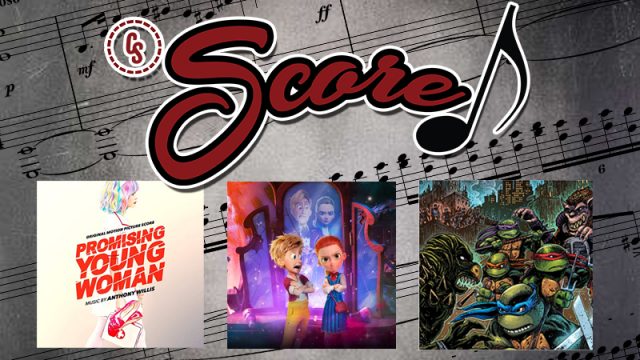Hey, there film score lovers! Welcome to another edition of CS Score, your place for everything film soundtrack related! Today, we’ve got a great interview with Anthony Willis, the composer of the Academy Award nominated drama Promising Young Woman. Willis received a BAFTA nomination for his incredible work on the film and takes the time to really delve into his scoring process.
We also got a chance to speak with Gabriel Hays who discussed his work on the Netflix animated film, Secret Magic Control Agency. Hays also spoke at length about the challenges of scoring an animated film, which is something you’ll definitely want to check out.
Finally, Waxwork Records was kind enough to send us copies of recently released vinyl albums for The Haunting of Hill House and Teenage Mutant Ninja Turtles II: The Secret of the Ooze.
Let’s do this thing!
RELATED: CS Interview: Tom Holkenborg On His Score for Godzilla vs. Kong!
NEWS
Back in stock CONAN THE BARBARIAN (3CD) https://t.co/YFQ8wlDAdz
— Intrada (@IntradaCDs) March 31, 2021
The full #GodzillaVsKong soundtrack by @Junkie_XL is available at: https://t.co/cbXZaDTlrB. Now in theaters and streaming exclusively on @HBOMax*.
*Available on @HBOMax in the US only at no extra cost to subscribers, for a limited time. pic.twitter.com/MORRHjKdwa
— Godzilla vs. Kong (@GodzillaVsKong) March 31, 2021
THE COURIER (score by Abel @korzeniowski) released today by @LakeshoreRecs: https://t.co/0UTdGDtwlG pic.twitter.com/gf5989Wh08
— Soundtrack.Net (@SoundtrackNet) March 19, 2021
PREMIER
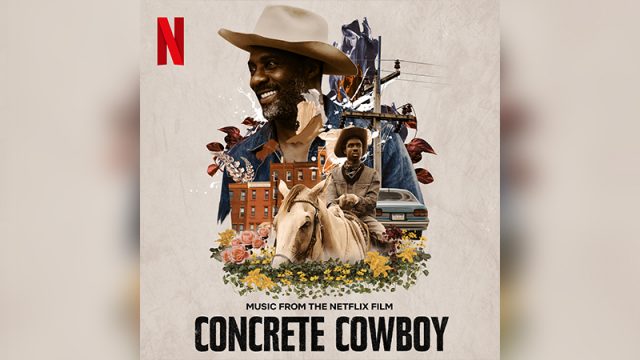
Check out a new track from the upcoming Concrete Cowboy—Music From the Netflix Film. Composed by Kevin Matley, the understated score highlights solo instruments to provide an emotionally rich and moving backdrop to the father-son drama about a teen caught between a life of crime and his estranged father’s vibrant urban-cowboy subculture. The film is directed by Ricky Staub, stars Idris Elba and Caleb McLaughlin and will release on Netflix on April 2.
Listen to “Cole’s Theme” and “You Don’t Have to Get Out to Grow Up”:
REVIEWS
The Haunting of Hill House
By The Newton Brothers
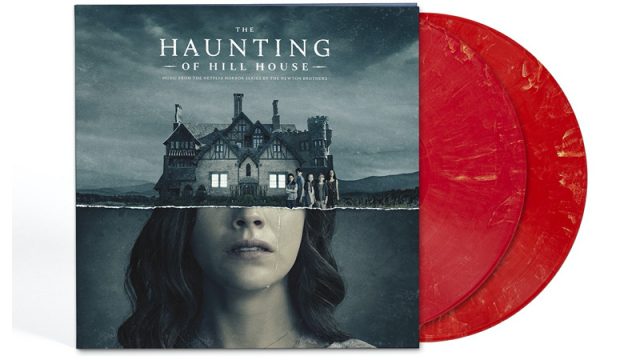
As was the case with The Haunting of Bly Manor, Waxwork Records released a stunning vinyl album for Netflix’s The Haunting of Hill House, which presents the Newton Brothers’ score in a handsome deluxe package featuring production stills, an 11×11 insert and a stunning layout aesthetic designed by Aesthetic Apparatus. Plus, you get a “Red Door” marble colored vinyl. What’s not to like?
The score itself, in our humble opinion, is stronger than the still excellent, but notably less focused, Haunting of Bly Manor, with strong themes punctuated by plenty of eerie underscore. The main theme is indeed haunting, but also carries a lot of emotional undercurrents as it underlines the broken family that serves as the show’s focal point by way of quiet, atmospheric piano (a motif carried over in Bly Manor). And the final tracks that close Hill House are absolutely heartbreaking, and quite lovely.
Check out this amazing record today!
Track List
Side A
1. The Haunting Of Hill House (Main Titles)
2. Come Home
3. Larks and Katydids
4. Darkness and Chaos
5. That Night
6. Take Her Down
7. Whatever Walked There, Walked Alone
8. Hill House
Side B
9. Go Tomorrow
10. Science Vs. Religion
11. What Did You Really See
12. The Red Room
13. Missing Things
14. I Believe You
15. 12:00 a.m.
16. In The Shadow Of Ghosts
Side C
17. I Want To Wake Up So Badly
18. Luke
19. Approaching The House
20. Haunted Past
21. You Remember
22. Feel Nothing
Side D
23. Beginning Of The End Movement I
24. Beginning Of The End Movement II (Tea Party)
25. Beginning Of The End Movement III
26. Beginning Of The End Movement IV
27. The End
Teenage Mutant Ninja Turtles II: The Secret of the Ooze
By John DuPrez
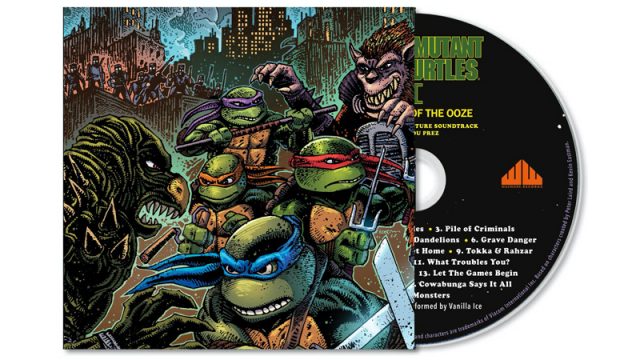
Teenage Mutant Ninja Turtles II had the herculean task of living up to 1990’s surprise blockbuster Teenage Mutant Ninja Turtles, which took in more than $200 million at the box office against a $13M production budget. Unfortunately, despite a bigger budget, and that killer Vanilla Ice song, the sequel failed to match the hype generated by its predecessor, only took in about $78M worldwide and went down as something of a missed opportunity.
Honestly, one of the biggest disappointments from kids at the time (including myself) was the lack of Bebop and Rocksteady, who could not be used for … reasons. Instead, the two goons were substituted with Tokka and Rahzar, which only added to the film’s low quality, B-movie aesthetic. Also, what the hell happened to Corey Feldman, Judith Hoag and Elias Koteas? And why did the turtles never use their weapons?
Anyways, one of the things the sequel did get right was the music, composed by John Du Prez, who also scored the original film. The musical quality is about on par with TMNT, with surprisingly elegantly written themes intermixed with 90s techno music. The score is not what one would dub cinematic greatness, but it certainly has its charms. And if you love the score, you just lucked out!
Waxwork Records has released an all new LP presentation of DuPrez’s score, realized for the first time in any format, packaged with all new artwork by TMNT co-creator Kevin Eastman. The score itself is quite short, with most tracks consisting of roughly two-three minutes of music, but this is definitely a love letter to the fans and a nice bit of nostalgia for any collector to own.
And yes, Ninja Rap is here as well.
Track List:
Side A
1. NY Pizza
2. Main Title
3. Pile of Criminals
4. Shredder Lives
5. Mutant Dandelions
6. Grave Danger
7. TGRI Fight
8. Home Sweet Home
9. Tokka & Rahzar
10. Scrapyard Scrap
11. What Troubles You
12. Master Say Have Fun
13. Let The Games Begin
14. Super Shredder
15. Cowabunga Says It All
16. Dark Monsters
17. Ninja Rap (Performed by Vanilla Ice)
Anthony Willis — Promising Young Woman
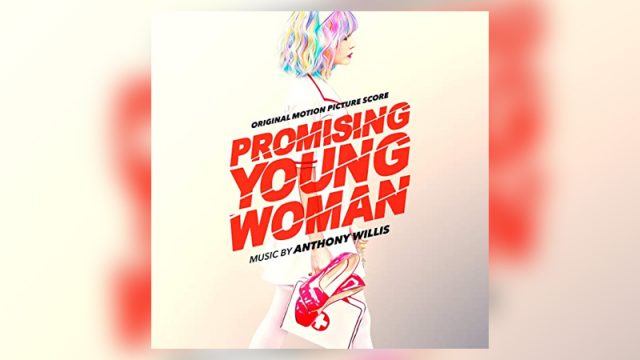
Composer Anthony Willis has taken a running leap into the Neverland of film scoring, composing music for many of Hollywood’s most beloved productions.
Willis recently earned a BAFTA Awards nomination for his “Original Score” to director/writer Emerald Fennell’s Oscar and Golden Globes nominated revenge thriller Promising Young Woman, starring Carey Mulligan and Bo Burnham, which premiered at the Sundance Film Festival in 2020.
Upcoming projects include Amin Matalqa’s animated adventure Hump, starring Simon Pegg and Gaten Matarrazo.
Willis’ composer credits include Dreamworks Animation’s Annie Award-winning How to Train your Dragon: Homecoming, starring Jay Baruchel and America Ferrera; Universal Pictures’ silent film 4k restoration of What Happened to Jones?, part of Kino Classics’ Reginald Denny Collection; Seasons 6 thru 8 of the video game sensation, Fortnite; Michelle Morgan’s Sundance Selection comedy It Happened in L.A.; Sony Playstation’s BAFTA nominated video game Knack II; David Yarovesky’s horror thriller, The Hive, starring Gabriel Basso; and more.
ComingSoon.net: Congratulations on your BAFTA nomination! I just watched Promising Young Woman and thought it was a fascinating, sad, but absolutely incredible motion picture. And I think your score is a key piece to its success.
Anthony Willis: Thank you very much. I mean, you know, I feel so lucky to be a part of it. And it’s really, as everyone is catching on, pretty much director Emerald Fennell’s vision. And I was really, really lucky at the time to be able to support her in that, and obviously, so delighted for her and everyone involved to see the film go the length that it has, so, a really wonderful outcome.
RELATED: Exclusive Promising Young Woman Behind-the-Scenes Clip
CS: What drew you to this project?
Anthony: Emerald had been looking for a composer, and, at the time, I really wanted to make her feel like she had her pick of the bunch, as it were. But she very sweetly asked me to watch the film and write a demo. She knew I had a background in more classic thematic scores. And so, I think she was thinking, I wonder what Anthony might be able to unlock for us. You know, whether, is there a theme? Is there a central theme for Cassie’s character that can run as a counterpart to the amazing use of pop songs in the movie? And I think it started really as a little experiment. And when I watched the, I was so blown away by it. I was left with this feeling, which was really created by the incredible character that Emerald wrote, but also just such a vivid portrayal by Carey Mulligan. And this theme image. And then what I realized is that it was a theme for — we also had conversations about how Cassie’s friend Nina could be brought into the story, because, obviously, everything that happens is the result of her. And what I realized is it needed to be a theme for lost friendship. And that theme is essentially a lullaby which are then subverted. So, it’s taking something that in its essence is really quite hopeful and optimistic, it rises, and it repeats, it can be quite sweet, even melancholic; but then when subverted, it helps you portray the trauma. And the theme, dare I say, promises hope. And, but then the treatment that I give it, makes it more haunted.

CS: One of my favorite cues of the film is the music that underscores the scene with Cassie and Nina’s mom; and the thing that interests me about that scene is exactly when you cue the music right after Cassie says, “I’m just trying to fix it.” If the music had come in a little bit before, maybe it doesn’t work quite as well. How do you determine when exactly to cue the music? Because the moment right there is perfection.
Willis: Oh, thank you so much. I mean that cue is definitely a favorite of mine. I was suppose we went kind of big or go home. Even though you’re seeing ultimately what unfolds, it’s a counterpart to a previous scene with Cassie on her laptop and you’re watching really a small — geographically a very small thing happening — but emotionally it’s enormous. And it’s a letting go of this trauma, releasing this trauma. We worked really hard. With film music cues, you really want them to be attached to an emotional turning point in the story. That’s something I got really excited about is what’s happening in the film that that should initiate the film in a way that it’s an extension of the narrative? So, that moment was just feeling the scene and going, okay, at what point is there a turning point?
CS: You’ve composed a handful of indie films and contributed to many animated films, but this is your first large-scale project. What were the challenges you faced?
Willis: I think every film is a challenge. Even the additional music I’ve written over the years, it’s always a challenge to find your way into a project. Of course, as the lead composer, you’re the one responsible for guiding the ship. So, I very much embraced that. And it’s really exciting. It’s really exciting to get to do that for a film. But everything’s daunting. I think if a composer isn’t a little bit daunted, they’re not taking the responsibility seriously enough. Film music needs to be spontaneous, too. So, if you don’t have that playful, spontaneous, and emotional kind of reaction to your work, I think it’s never going to feel that way to an audience. So, as daunting as these things are, you try to just fall into the film, and really have a good time, as well.
CS: Were there any new instruments you ended up using on Promising Young Woman that you hadn’t used before in previous projects?
Willis: Yes, I’d say I’ve never extensively used an organ, which we use quite a lot to underpin a lot of the tension music that supports Cassie in her missions. That’s not an instrument that everyone really likes; and it has a very breathy, soulful quality that’s actually not a million miles away from a voice. When it’s very low, it delivers a feeling of judgment — of justice being served. So that was a really fun instrument to play with.

CS: How do you come up with your themes and your rhythms or motifs? I’ve heard other composers say they’ll be walking in the grocery store and something comes to them. Has that happened to you?
Willis: It’s a really great question. I think that melodically composers tend to have the things that appeal to them in terms of how they tell a story. So, you have the kind of stylistic instinct of how you like to put notes together, and how you like that through line to develop. So, I think, yeah, a lot of it does happen subconsciously while you’re in those situations — you’re on the call, you’re on a bike ride. For me, for Promising Young Woman, I was very much thinking about the movie and I had this feeling from Carey Mulligan’s performance, and this sadness, you know, lost hope. And that sat with me. I didn’t have the theme completely as it is now. That probably took a day or two to come into focus. But I definitely think you’re amiss as a composer not to pay attention to those little moments where your mind is on something else, and then If something pops in your head, keeping track of it.
Some people used to say, ‘Oh, if you don’t remember it later than it wasn’t any good.’ I’m not sure I believe in that. It will come back to you if it’s really something that your brain is subconsciously marinating over. But, yeah, it’s always a scary process, because it’s such a defining one. You’ve set so many things in motion. So, I’m always a little tentative with the idea, and in that moment, it’s always a bit fragile — the idea of, ‘Oh, well, if I turn the wrong way, I’ll blind myself from seeing what this could have been.’ But it’s a great question, because it is such an abstract thing.
Obviously, I think there’s qualities in the theme that will be important, depending on its narrative and application — and be able to apply the right kind of harmony. I like to write themes that they imply a clear harmony, but they’re also harmonically malleable, which is the case of Cassie’s theme in Promising Young Woman. In fact, her theme is really introduced as a thriller theme, and then ultimately becomes a very romantic fairy tale theme. It’s even in that cue that you mentioned, when Cassie was talking to Nina’s mom. I like to have cells that I can manipulate and do different things with. So, it’s really wonderful to do something that John Powell, who’s been an amazing mentor to me, and taught me that you want to be able to take a theme and manipulate into different places.
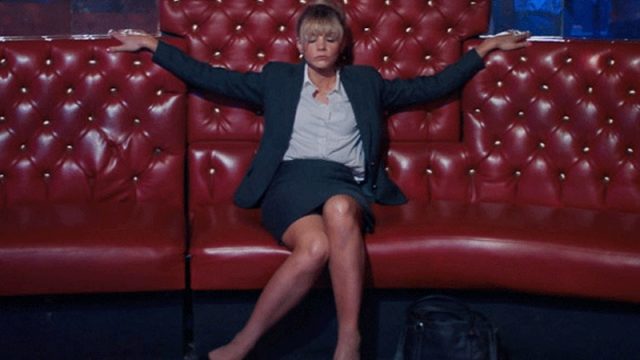
CS: Do you ever worry about over scoring a film?
Willis: It really depends on what the director’s drawing from. And I think that with Promising Young Woman, you want the audience to really feel the music; and want it to enhance the the story. And in in some cases, and some films, like for example, How to Train Your Dragon — I did the holiday special a few years ago —that’s something where you really want the music to be right up here, and to be right next to the animation in terms of people’s focus. And then, in more contemporary films that strive for more realism, now you want the music to be very subconscious. In Promising Young Woman, the overarching musical choice that Emerald made is to use irony very heavily, I mean, in the way that she uses pop songs — “Raining Man,” for example — it’s all about boys, and you’re hearing the soundtrack of what a film 20 years ago might have been like, but you’re seeing the perspective from a different angle. You’re seeing those angles that have previously been covered up. So, I think that the score is similar. I think Emerald really wanted to play with the audience in terms of what film that they were in.
GABRIEL HAYS — SECRET MAGIC CONTROL AGENCY
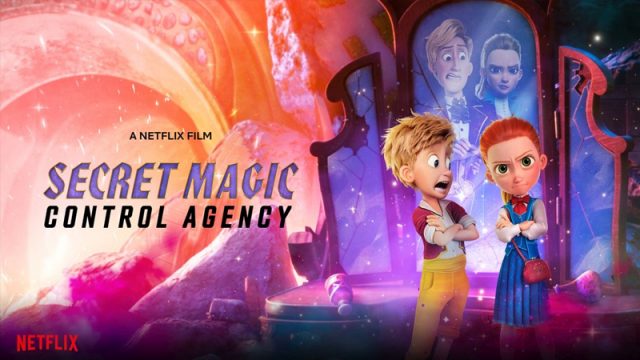
Did you ever imagine Hansel and Gretel would become top agents for the Department of Magical Security after escaping the Witch’s gingerbread house?
Yeah, me neither…
But that’s exactly what happens in Secret Magic Control Agency, scored by Gabriel Hays (Disney’s Star Darlings), coming to Netflix March 23rd.
The new Wizart Animation feature film merges the unlikely genres of “fantasy fairy tale” and “spy mystery”, which created unique challenges for Hays to solve in the score. Whereas spy music is typically mysterious with serious swagger; the fantasy side of things typically feels more mystical, otherworldly, and EPIC.
Yet Hays pulled from both seemingly disparate genre traditions to compose the perfect score for the film. He found that both types of music shared some commonalities – a sense of uncertainty, but also adventure and discovery; themes which lent themselves well to this modern take on classic characters – full of fun, whimsy, and heart.
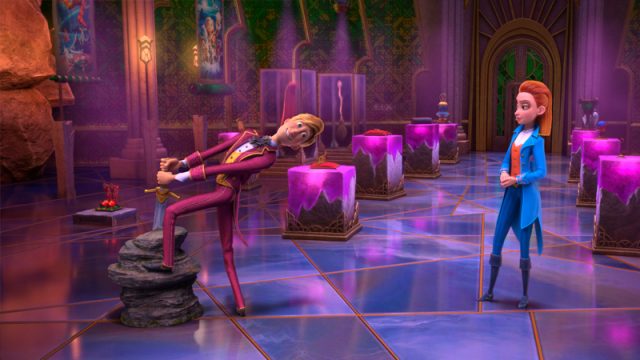
ComingSoon.net: What drew you to Secret Magic Control Agency?
Gabriele: Secret Magic is a really interesting story. I guess everyone is pretty much familiar with the fable of Hansel and Gretel — two orphans get captured by the evil witch in the forest. And that’s the leaping off point for where this story goes, because I’m not sure how much you know about it, but in the Secret Magic Control Agency, they are actually secret agents; and they’re adults, at least when the movie starts. So, a lot of things wrapped up in there. And it’s a pretty interesting story just to try and wrap your head around, but then what does the story mean for the music? That also really quickly jumped to the front of my mind.
CS: So, you’re merging two genres together, you’re merging fantasy fairy tale and spy mystery. How does your music cater to each genre? Did you find it difficult merging the two genres?
Gabriel: Great question. Yeah, it was a bit of a challenge to figure out how to do it. You know, I think the first thing to me was to have a good think about what each of those genres mean to me from a stylistic standpoint, and dramatic standpoint. I think one thing they share in common is a sense of mystery. In fantasy, you’re usually on a on a quest, and in spy movies, there’s a different kind of quest, it’s like trying to solve a whodunnit. And so, you’re solving things in both. So, there’s a certain commonality, and a shifting energy. I try not to get too nerdy on the music side of things, but it was melodically really thinking of it from a fairy tale standpoint, and then from the support side of it, thinking of it a little more from the spy side of it, if that makes some sense.
CS: What is the process of scoring an animated film like? When do you come into the production? How much time do you have to score the film?
CS: One real nice thing about animation from a composer standpoint, is that you do get the cut of the film early, and they don’t change as much as a live action film might change, because once they get the story and the dialogue recorded, there’s so many different processes that have to happen before it gets finished, music being one of them, but of course, finishing the animation and things like that. So, I did have a good time to work on it. But, inevitably, it’s still a big push at the end, no matter what, you’ve got to work through it. You find themes and develop them and sometimes they move around a little bit in the in the film. Like you write it in one place and realize, oh, it can also work really well over here or another place, things like that.
CS: How much creative freedom do you have on an animated picture? Are you given absolute freedom or are the powers-that-be giving you very precise instructions on how to score the film?
Gabriel: In this case, it was a combination of both. I think one thing that we realized pretty early on, as I started working on different parts of it, is that they really had a lock the themes that everybody felt were right for the movie. So, on that side of it, what happened was, I started writing various things on the piano. Usually, sometimes I do a little bit more, but generally just the piano, and then send those ideas to them. And we’d have a back and forth about which parts of it were working and which direction to go. We arrived on basically one or two main themes that have similar qualities in terms of how they work. And those became the main anchor of the film. And once we had that, that helped quite a bit. But then they had a lot of sense of pacing, like, how they cut the cut the movie, so you really have to pay a lot of attention to how they cut; and how they animated — the animation was very lively, so you really have to pay attention to that pacing that they were sending my way. It was a nice balance between the two, I definitely had a lot of freedom to explore, though.
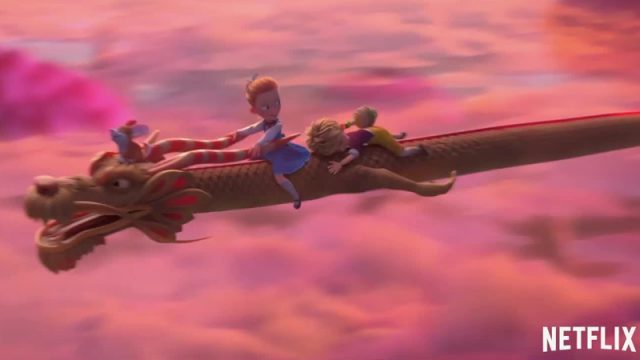
CS: How difficult is it to score an animated film in which you have to hit specific actions made by characters, versus live action?
Gabriel: Generally, I’d say yeah, it’s a little bit denser in terms of the music, it changes a lot more often. In terms of hitting things on screen, that’s something you have to feel out on a given project. And you can think of like the old, as they call it, Mickey Mouse-ing techniques, which is — like, Looney Tunes — when you hit every little gesture, right? But a lot of times, especially if it’s like an action thing that you know, is kind of pretty natural. But then a lot of times you’re trying to get the overall mood being — that’s the most important thing, the overall feeling while still catching important moments.
CS: What drew you to the world of film scoring? How did you get involved with it? How did you know if this was the career that you wanted to do?
Gabriel: You know, I would say for me, as soon as I really got into writing or music, it was always an aspect of what I was interested in, but it wasn’t the only thing. You know, I started writing music, kind of from right away when I first started taking piano lessons as a kid, I started writing right away. Over the years, you get better as you study and improve. But I wanted to go do music just for myself for a while. And I did that. I lived in New York for about 10 years in my 20s. And then, and at some point, I just always had in the back of my mind that I was interested in scoring film and it might be something I really wanted to go for. And that happened when I was in New York. So, I actually went to NYU and within it, they have a graduate program there that I went to and that was really helpful. I learned a lot there and met some great people and then from there it was pretty much just knew that, but it was on to Los Angeles. Film is also just something I always loved as a kid. I would say it was my second love of mine. In addition to doing music, I did theater in high school. I directed a play and was part of theater for a long time. So, it was always a second strong interest to me with music. And so, getting to basically do filmmaking, but the musical part of filmmaking was something that felt really natural for me.
